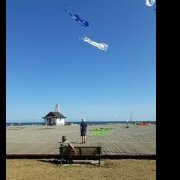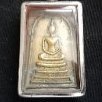Buddha In Auschwitz
-
Recently Browsing 0 members
- No registered users viewing this page.
-
Topics
-
-
Popular Contributors
-
-
Latest posts...
-
94
Current Status of Thailand's Cannabis Law Changes
Anyone notice how quiet things have been over the last week ? The anti-weed nutcase Dr. Doom has suddenly gone quiet with any new announcements. (Not legal rules or laws.) -
349
UK Macron Blames Brexit for Channel Migrant Surge as UK-French Deal Faces Turmoil
https://islamqa.info/en/answers/7191/what-is-hijrah Completely different meaning from the one implied. "Hijrah (emigration) for the sake of Allah means moving from the land of shirk to the land of Islam as Muslims moved from Makkah to Madinah." -
349
UK Macron Blames Brexit for Channel Migrant Surge as UK-French Deal Faces Turmoil
You dismiss what you have not bothered to investigate in any serious manner. Presumably because you are determined not to admit anything contrary to your preconceived opinions. So be it. -
100
Report Wall Street to Sukhumvit: Expat’s Brutal Wake-Up Call for Dreamers in Thailand
This article looks like an advert for his book to me. How many books are there about the pitfalls of moving to Thailand? I have no intentions of buying his book. I have lived in Thailand and worked here on and off since 1991 and had been on holiday many times before. When did he move, before or shortly after 2007-8 ? -
7
The Great Trump Tomato Crisis
Trump wants American farmers to be able to Ketchup. -
-
-
Popular in The Pub







.thumb.jpeg.d2d19a66404642fd9ff62d6262fd153e.jpeg)








Recommended Posts
Create an account or sign in to comment
You need to be a member in order to leave a comment
Create an account
Sign up for a new account in our community. It's easy!
Register a new accountSign in
Already have an account? Sign in here.
Sign In Now